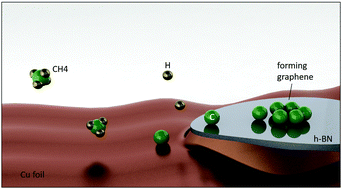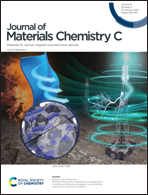In situ growth of graphene on hexagonal boron nitride for electronic transport applications
Abstract
Transferring graphene flakes onto hexagonal boron nitride (h-BN) has become a common approach for fabricating graphene/h-BN heterostructures. Controlling the alignment between graphene and h-BN lattices is difficult to achieve and the h-BN/graphene interface is prone to contamination in this complicated process. Direct synthesis of graphene on h-BN is a rapidly growing alternative. In situ grown graphene is individually tailored to conform to the specific h-BN flake, hence the limitations of the conventional transfer-based fabrication approach are overcome. Developed processes promise improved scalablity of the device fabrication, eventually suitable for industrial applications. The developments in the field, from inception to current status is the focus of this review. How the field is progressing to overcome existing challenges is discussed together with its future prospects.

- This article is part of the themed collection: Journal of Materials Chemistry C Recent Review Articles


 Please wait while we load your content...
Please wait while we load your content...